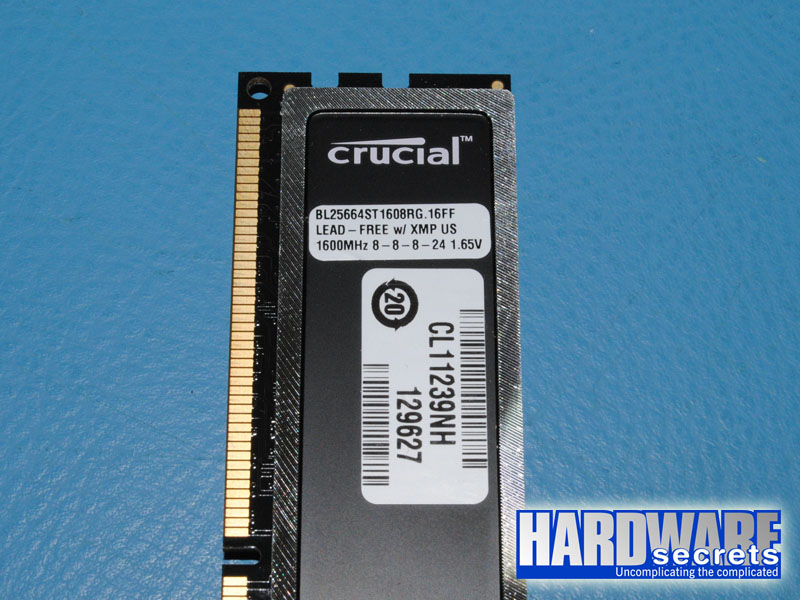Step-by-Step Guide to Understanding RAM: Basics, Timings, and Speeds

WebCoder

Learn how RAM works, explained in simple terms! This step-by-step guide walks you through RAM basics, timings, speeds, and classifications to help you understand how it impacts your computer’s performance.
If you’ve ever wondered why some computers are faster than others or why RAM specs sound so confusing, don’t worry—you’re not alone! In this step-by-step guide, we’ll break down what RAM is, how it works, and what all those technical terms like "DDR3" and "9-9-9-24 timings" actually mean. Whether you're tech-savvy or just starting out, this guide will help you understand the basics of RAM memory and how it impacts your device’s speed and performance.
Step-by-Step Guide to Understanding RAM Basics
Step 1: What is RAM?
RAM stands for Random Access Memory. It’s a type of computer memory that temporarily stores data your device needs right now. Think of it as your device’s short-term memory. The more RAM you have, the more data your computer can handle quickly, like running multiple apps at once. But RAM is different from long-term storage (like a hard drive), where your files are saved permanently. When your computer turns off, everything stored in RAM is wiped clean.
Step 2: Why Does RAM Matter?
RAM plays a crucial role in how fast and smooth your device operates. If you’ve ever opened too many programs at once and noticed things slowing down, that’s probably because you’re running low on RAM. More RAM means your device can process more tasks simultaneously, leading to faster performance.
Step 3: What Are RAM Timings?
When shopping for RAM, you might see numbers like 9-9-9-24 or 7-7-7-18. These are RAM timings, and they refer to how quickly the RAM can access and move data. Simply put, lower numbers are better because they mean the RAM can respond faster. Let’s break down a common timing example, like 9-9-9-24:
- First number (CAS Latency or CL): This tells us how many clock cycles it takes for RAM to start delivering data after the CPU requests it.
- Other numbers (tRCD, tRP, tRAS): These refer to other operations inside the RAM, like how fast it can open new rows of memory and retrieve data.
Lower timings mean faster RAM, but they also cost more. For most users, the difference in performance between CL9 and CL7, for example, won’t be noticeable unless you’re gaming or using heavy-duty applications.
Step 4: RAM Speed Explained
Another important aspect of RAM is its speed, measured in MHz. Higher MHz means the RAM can process data faster. But here’s the trick: RAM speed isn’t just about the number on the label. The speed you see advertised, like DDR3-1600, isn’t the actual speed the memory runs at—it’s double the true clock speed due to something called "double data rate." Confused? Let’s simplify it:
- DDR (Double Data Rate) RAM transfers data twice per clock cycle.
- For example, DDR3-1600 means the RAM operates at 800 MHz but transfers data twice per cycle, so it's marketed as 1600 MHz.
This brings us to the different types of RAM.
Step-by-Step Breakdown of DDR RAM Types
Step 5: Understanding DDR, DDR2, DDR3, and DDR4
You’ll often see RAM categorized as DDR, DDR2, DDR3, or DDR4. The higher the number, the newer (and faster) the technology. Here’s how each differs:
- DDR (Double Data Rate): The oldest and slowest. Transfers data twice per clock cycle.
- DDR2: Faster than DDR, typically runs between 400 MHz and 800 MHz.
- DDR3: More common today in older devices, running up to 1600 MHz (though the real clock speed is 800 MHz, as we mentioned before).
- DDR4: The latest and fastest version, typically running above 2400 MHz.
The important takeaway? Each version is faster and more efficient than the last. However, the type of RAM you need depends on your motherboard. You can't mix DDR3 with DDR4, for example—they’re not compatible.
Step 6: RAM Classifications (DDRxxx/PCyyyy)
Now that we understand RAM speeds, let’s talk about RAM labels. When you see DDR3-1600 or PC3-12800, these labels tell you two things:
- DDRxxx: The maximum clock speed the RAM supports (e.g., DDR3-1600 means it runs at 1600 MHz, or 800 MHz per cycle).
- PCyyyy: The maximum data transfer rate, in megabytes per second. For instance, PC3-12800 means the RAM can transfer 12,800 MB per second.
To simplify, here’s a comparison:
- DDR3-1333 (PC3-10600): Transfers up to 10,600 MB/s.
- DDR3-1600 (PC3-12800): Transfers up to 12,800 MB/s.
The faster the speed, the more data the RAM can move at one time, which helps with things like gaming or video editing.
Step-by-Step Guide to Choosing RAM
Step 7: How to Choose the Right RAM for Your System
When buying RAM, keep these factors in mind:
- Type of RAM: Make sure your motherboard supports it (e.g., DDR3, DDR4).
- Capacity: How much RAM do you need? Most modern systems run smoothly with 8 GB to 16 GB. If you're a gamer or video editor, 32 GB might be better.
- Speed: Look for at least DDR4 with 2400 MHz or higher for modern computers.
- Timings: Lower timings are better, but if you’re not into overclocking or gaming, you can go with standard CL9 or CL10 modules.
Step 8: RAM Installation and Configuration
Installing RAM is pretty simple. Once you buy the right type and amount, you just need to insert the RAM sticks into the motherboard slots. Make sure your system is powered off when you do this.
After installing, your motherboard will usually set the RAM to an automatic configuration (Auto mode). If you're tech-savvy and want to squeeze more performance, you can manually adjust RAM timings in your motherboard’s BIOS settings—but this is optional and advanced.
FAQs About RAM
How much RAM do I need for gaming?
For gaming, we recommend at least 16 GB of RAM. If you’re running multiple apps or playing high-end games, 32 GB is even better.
Does RAM speed really matter?
Yes, but the difference is most noticeable in high-performance tasks like gaming or video editing. For everyday use, standard speeds (2400 MHz or higher) should be fine.
What’s the difference between DDR3 and DDR4?
The primary difference is speed and efficiency. DDR4 is faster and uses less power than DDR3. However, you’ll need a compatible motherboard to use DDR4.
Can I mix different types of RAM?
No, you can’t mix types like DDR3 and DDR4. They operate differently and aren’t compatible with the same motherboards.
Can RAM affect my PC's performance?
Absolutely! More RAM or faster RAM can significantly improve your system’s performance, especially when multitasking or using resource-heavy programs.
Wrapping it Up
Understanding RAM doesn't have to be complicated. Think of it as your device’s short-term memory—it helps your computer run smoothly by temporarily storing the data it needs to access quickly. The speed, capacity, and type of RAM all play a part in how fast your computer can perform tasks. Whether you're upgrading your system or just curious, we hope this guide made the world of RAM a little clearer.

Vijayakumar Mayilsamy
WebCoder
WebCoder focused on creating seamless web experiences. Expert in WordPress development and bridging the gap between design and functionality.
